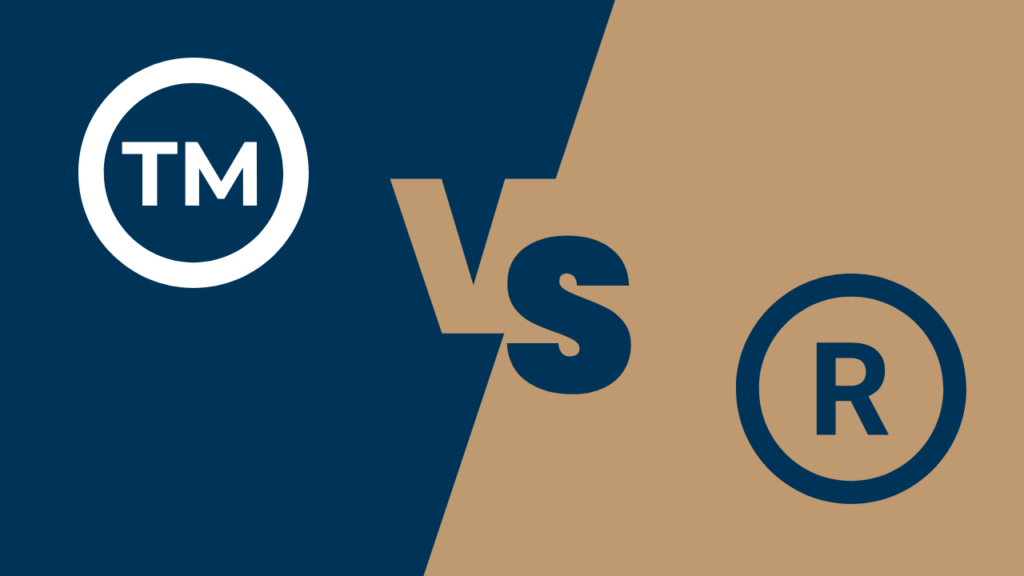A trademark is a symbol, word, or phrase that represents the origin of a product or service and sets it apart from others in the market. It is an essential element of branding and marketing a business. A trademark owner has the exclusive right to use the trademark and prevent others from using it without permission.
Trademark ownership and trademark law can be a complex issue, especially when it comes to determining who owns a trademark. In general, the person or entity that first uses a trademark in commerce owns the rights to it. However, there are situations where ownership can be transferred, such as in the case of a sale or merger of a business. It is important to understand the basics of trademark ownership and the legal processes involved in transferring ownership to ensure that you protect your rights and avoid disputes.
Quick Summary of Who Owns a Trademark
- Trademark ownership is determined by first use in commerce (when the trademark is not registered)
- Ownership and goodwill of the mark can be transferred through a sale or merger of a business.
- Understanding the basics of trademark ownership and transfer can help avoid disputes and protect your rights.
- Trademark registration on a national or country level can enhance your protection of your mark.

Trademark Basics
Definition of a Trademark
A valid trademark is a symbol, word, phrase, design, or combination of these elements that identifies and distinguishes the source of goods or services of one party from those of others. It is a form of intellectual property that provides legal protection for a brand. A trademark can be registered with the United States Patent and Trademark Office (USPTO) to obtain additional legal protections. This is a federal trademark registration that covers the business entity throughout the entire United States.
Types of Trademarks
There are several types of trademarks, including:
- Word Mark: A word or phrase used to identify a product or service including brand names and domain name
- Design Mark: A logo, image, or graphic design used to identify a product or service.
- Combined Mark: A combination of a word and a design mark.
- Service Mark: A mark used to identify a service rather than a product.
- Certification Mark: A mark used to indicate that goods or services meet certain standards.
- Collective Mark: A mark used by members of a group or organization to identify themselves and their products or services.
It is important to note that owning a registered trademark does not give the owner the exclusive right to use the word or phrase in all situations. Trademark owners only have exclusive rights in a certain jurisdiction such as a country (among the USA) to use their mark in connection with the goods or services specified in their registration (such as clothing, restaurant services, automotive repair, manufacturing, or agriculture). If you have a product that you have invented or designed, then you need a U.S. patent which is different than a trademark.
Who owns a trademark? Generally, the business owner or entity that uses a trademark in commerce first is considered the owner of the mark. However, in some cases, ownership may be transferred or assigned to another party. It is important to consult with a trademark attorney to ensure proper ownership and protection of a trademark.
Trademark Ownership
Trademark protection and ownership refers to the party that has the legal right to use and control the trademark. A trademark owner can include individuals, partnerships, corporations, limited liability companies (LLCs), and other legal entities. In general, whoever uses a trademark first has the right to own it, but there are exceptions.
Initial Ownership

In the United States, initial ownership of a trademark is determined by who uses the mark first in interstate commerce. This means that the first person or business to use a trademark in connection with the sale of goods or services between at least two states has the right to own the mark.
However, the right to own a trademark can be lost if the mark is abandoned or if someone else starts using the same or similar mark. Individuals or companies who are claiming common law ownership can use the “TM” after their mark when advertising or branding goods or services. After registration (see below), they can use the ® symbol.
Ownership Through Use
Trademark ownership can also be established through use in interstate commerce, such as selling products on the internet, selling in physical locations of two or more states, advertising across states, or certain industries such as restaurants and food stands. If a person or business uses a trademark for a certain period of time and the mark becomes associated with their related goods or services, they may have the right to own the mark. This is known as common law trademark rights. However, common law rights are limited to the geographic area where the mark is used.
Ownership Through Registration
The most secure way to establish trademark ownership is through the registration process with the U.S. Patent and Trademark Office (USPTO) – the US federal governmental agency tasked with the trademark and patent system. Once a trademark is registered with the USPTO, the owner has the exclusive right to use the mark nationwide in connection with the goods or services specified in the registration (with the exception of marks with prior-rights).
Registration also provides the owner with certain legal protections and remedies in the event of infringement. This process is started through an application with the USPTO. This process can be complex and can take sometimes over two years to complete, however protection is retroactive once the registration “®” is issued.
It’s important to note that ownership of a trademark can be transferred or assigned to another party through a written agreement. This is often done through a trademark assignment, which is a legal document that transfers ownership of a trademark from one party to another. The assignment must be recorded with the USPTO to be valid.
In conclusion, trademark ownership is established through use or registration with the USPTO. While initial ownership is determined by who uses the mark first in commerce, registration provides the most secure and comprehensive protection for a trademark owner.
Transferring Trademark Ownership
Transferring trademark ownership is a common practice in the business world, and it can be done in various ways. In this section, we will discuss two of the most common methods: assignment agreements and licensing.
Assignment Agreements

An assignment agreement is a legal document that transfers ownership of a trademark from one party to another. This agreement must be in writing and signed by both parties to be legally binding. The assignment agreement must include a detailed description of the trademark being transferred, the effective date of the transfer, and any other relevant terms and conditions including payment, and payout terms.
Once the assignment agreement is signed, the new owner of the trademark assumes all rights and responsibilities associated with the trademark. This includes the right to use the trademark in commerce, the right to license the trademark to others, and the obligation to enforce the trademark against infringers.
Licensing
Licensing is another way to transfer trademark ownership. In a licensing agreement, the owner of a trademark grants permission to another party to use the trademark in exchange for payment. This allows the licensee to use the trademark in commerce without assuming full ownership of the trademark.
A great use here might be for a social media influencer who is using their account name as a mark and wants to allow another social media channel or outlet to use their name for a period of time. Or if a product-maker is incorporating their work into another product of a separate product or service, such as if a car wash soap maker is using their soap in a certain car wash servicer.
Licensing agreements can be exclusive or non-exclusive. In an exclusive licensing agreement, the licensee is the only party allowed to use the trademark in the licensed territory or market. In a non-exclusive licensing agreement, the licensor can grant licenses to multiple parties to use the trademark in the same territory or market.
It is important to note that licensing agreements do not transfer ownership of the trademark. The licensor retains ownership of the trademark and can continue to use the trademark in commerce and grant licenses to other parties.
In conclusion, transferring trademark ownership can be done through assignment agreements or licensing. Both methods have their advantages and disadvantages, and the choice of method will depend on the specific circumstances of the transfer.
Protecting Trademark Rights
Once a trademark has been registered, it is essential to protect its rights. This section covers two critical aspects of protecting trademark rights: Monitoring and Enforcement, and Renewal and Maintenance.
Monitoring and Enforcement
The owner of that trademark must monitor the marketplace for any potential trademark infringement of their mark. This can be done by conducting regular searches of the USPTO database, as well as conducting internet searches for unauthorized use of the mark. If any infringement is found, the trademark owner should take immediate action to enforce their rights. This can include sending cease and desist letters, filing a lawsuit, or taking other legal action.
U.S. trademark owners can also take proactive steps to prevent infringement by registering their mark with the US Customs and Border Protection agency. This allows the agency to seize any goods that infringe on the mark when they enter the United States.
Renewal and Maintenance
Trademark owners must also ensure that their mark is renewed and maintained properly. Trademarks must be renewed at different intervals, starting with the 5th year of use and ending with every 10 years after established use., and failure to do so can result in the mark being canceled. Additionally, trademark owners must use their mark in commerce to maintain their rights. If a mark is not used for an extended period, it may be deemed abandoned and lose its protection.
Trademark owners should also consider registering their mark internationally if they plan to do business outside of the United States. This can be done through the World Intellectual Property
Organization (WIPO) or by filing individual applications in each country where protection is desired.
In summary, protecting trademark rights involves monitoring the marketplace for potential infringement and taking legal action when necessary, as well as ensuring that the mark is renewed and maintained properly. By taking these steps, trademark owners can ensure that their mark remains protected and enforceable.
Legal Disputes and Resolutions

When a dispute arises regarding the ownership of a trademark, several legal procedures can be followed to resolve the issue. The most common types of legal disputes involving trademarks are opposition proceedings, infringement and litigation.
Opposition Proceedings
Opposition proceedings are a type of legal dispute that arises when one party files an opposition to another party’s trademark application. This typically occurs when the owner of an existing trademark believes that a new trademark application is too similar to their trademark and could cause confusion among consumers.
During an opposition proceeding, both parties have the opportunity to present evidence and arguments to support their position. The opposition board will then make a decision based on the evidence presented and will either allow or reject the trademark application.
Infringement and Litigation
Infringement and litigation are legal disputes that arise when one party believes that their trademark has been infringed upon by another party. This can occur when a third party uses a trademark that is identical or similar to an existing trademark in a way that could confuse consumers.
In cases of infringement and litigation, the owner of the trademark may file a lawsuit against the infringing party. If the lawsuit is successful, the infringing party may be required to stop using the trademark and may be ordered to pay damages to the trademark owner.
It is important to note that the outcome of legal disputes involving trademarks can vary depending on several factors, including the strength of the trademarks involved and the evidence presented by each party. As such, it is important to seek the advice of a qualified attorney if you are involved in a legal dispute regarding the ownership of a trademark.
Who owns a Trademark Frequently Asked Questions
How can someone determine the owner of a specific trademark?
Determining the owner of a particular trademark can be a complicated process. However, there are a few different ways to go about it. One way is to conduct a trademark name search through a knockout search with a trademark attorney. Another way is to directly contact the company or individual that is using the trademark and ask them who owns it. If someone is going to use another’s mark, make sure there is an agreement between the parties outlining all the specifics needed to make sure there is no trademark infringement.
Are trademarks typically registered under individuals or companies?
Trademarks can be registered under both individuals and companies. However, it is more common for companies to own trademarks, as they are often associated with specific products or services offered by the company.
In what ways can someone establish their right to a trademark?
To establish their right to a trademark, someone must first use the trademark in commerce. This means that the trademark must be used in connection with a product or service that is sold, offered for sale, or general advertising to the public. Once the trademark is used in commerce, the owner can establish their right to the trademark through common law rights or by registering the trademark with the USPTO.
What steps must be taken to register a trademark?
To register a trademark with the USPTO, the owner should first conduct a thorough trademark search (also called a knockout or clearance search) to ensure that the trademark is available for registration. They must then file a trademark application, which includes a description of the goods or services associated with the trademark, and pay the required fees. The application will be reviewed by an examining attorney, who will determine whether the trademark is eligible for registration.
How does one search for registered trademarks in the US?
To search for registered trademarks in the US, one can use the USPTO’s online database or a knockout search with an attorney. The database allows users to search for trademarks by keyword, owner name, or registration number. It is important to note that the database does not include trademarks that are protected under common law rights.
We’re here to help
It’s very important to protect your assets and your brand with a trademark. If you have any comments or concerns about the process, please contact our firm at Joe D’Angelo Law and we are happy to help at any stage of your branding journey.
The information provided in this blog, article, or video post is for general informational purposes only and is not intended to be legal advice. The matters discussed in this article may be complex and subject to varying interpretations and applications depending on the specific facts and circumstances, and changes in law. This post is not a substitute for professional legal advice tailored to your individual situation. No reader should act or refrain from acting on the basis of any information included in, or accessible through, this post without seeking the appropriate legal or other professional advice on the particular facts and circumstances at issue from a lawyer licensed in the recipient’s state, country, or other appropriate licensing jurisdiction. This blog post nor anything on this website shall create an attorney-client relationship.
This blog post is considered lawyer advertising. Prior results do not guarantee a similar outcome.

